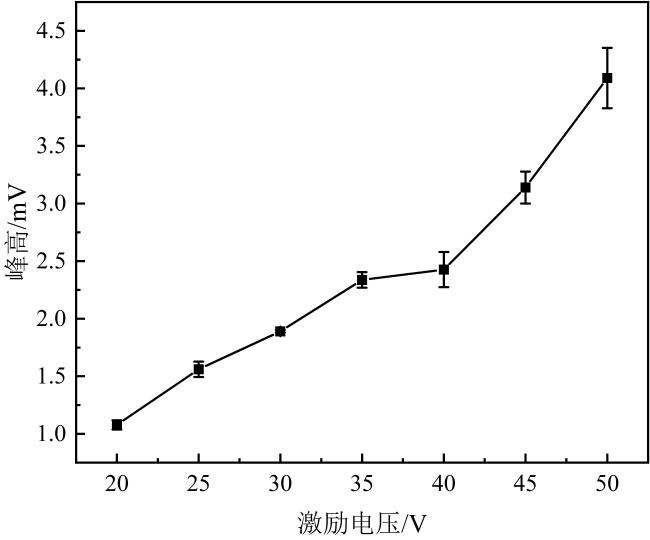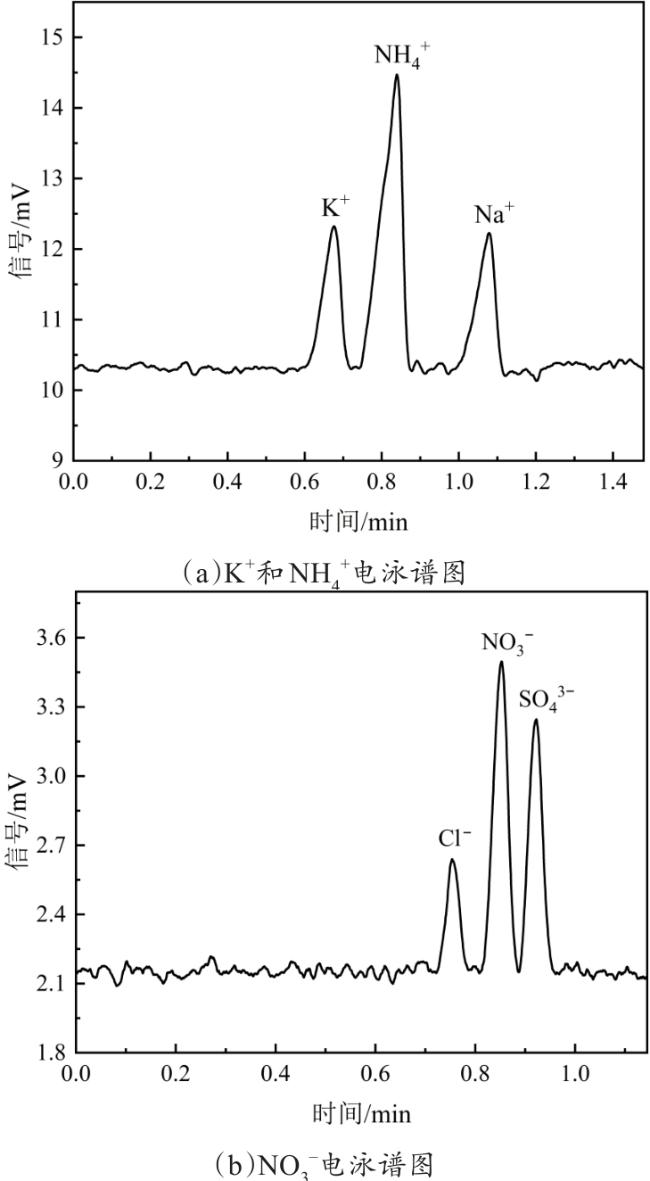电容耦合非接触式电导检测(Capacitively Coupled Contactless Conductivity Detection, C
4D)是一种利用传感电极和被测溶液之间的电容耦合效应进行电导率测量技术。它测量的是被测物质与运行缓冲液之间的电导率差值
[12, 13]。由于其传感电极不与被测溶液直接接触,将用于电泳的高压电场与检测电路隔离,可抑制高压干扰,产生稳定的C
4D基线
[14],具有较好的鲁棒性,已经成功地与毛细管电泳(Capillary Electrophoresis, CE)和微流控芯片电泳(Microfluidic Chip Electrophoresis, MCE)相结合
[15, 16]。微流控芯片电泳分离通过毛细管区带电泳在微流控芯片通道中进行,与高效液相色谱法等相比,其特点是分离效率高、分离时间短、样品量要求小
[17-20]。微流控芯片电泳已迅速成为一种有效的分离分析方法。近年来,MCE与C
4D相结合已经应用于各个领域,如医疗诊断
[21, 22]、环境监测
[23, 24]、国防安全
[25]和药物测试
[26]等。Smolka等
[27]开发了一种土壤样品提取物现场分析的移动传感器。Xu等
[28]开发了一种基于电泳的微流控离子营养传感器,用于检测土壤溶液样品中的硝酸根离子(NO
3 ‒)含量,检测限约为7.25 µmol/L。微流控芯片制造采用蒸发、沉积、计算机数控(Computer Numerical Control, CNC)和剥离等工艺,需要使用大型专业仪器,制造成本高、耗时,不可批量制作,而且检测效率较低,难以做到N、K养分离子的同步检测。因此,微流控芯片的简便、低成本制作以及N、K离子同步检测对于土壤养分检测应用具有重要意义。
















